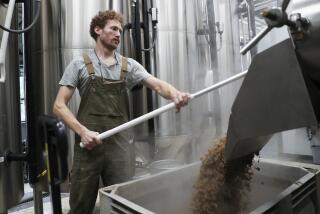For beer lovers, now’s the time to appreciate the freshest hops
It’s one of the best times of year to be a brewer; it’s hop harvest time. The pungent flowers that give beer its balancing bitterness and a wealth of flavors and aromas are being harvested through the hop fields of Oregon, Idaho, and Washington, and tons of those hops are now making their way into fresh-hop brews.
Hop-forward beers using the new harvest are already hitting tasting rooms and bottle shops, but what exactly is the difference between a fresh-hopped beer and a wet-hopped beer? And where does dry hopping come in?
Let’s get dry hopping out of the way first since it is a technique and not actually a type of hop. Brewers dry hop beers by adding a dose of hops at the tail end of a brew’s fermentation. The hops steep in the fresh beer and contribute their myriad aromas to the brew without adding more bitterness.
Though there is some quibbling among brewers and beer writers, fresh- and wet-hopped beer is defined by the Brewers Assn. as being the same thing -- beer that uses newly harvested hops that have not gone through the typical drying and processing steps that the majority of the hop crop sees.
Sometimes the hop cones are cured for a few days, sometimes they are shipped right to the brewers, either way they imbue a brew with a fresh, grassy and bright hop flavor. Many breweries have specialty brews that feature fresh hops and only get released around this time of year.
Some examples to look out for are Deschutes Brewery’s Chasin’ Freshies and Hop Trip, Sierra Nevada’s Celebration IPA, and -- a new favorite that was just released from Beachwood Brewing, Fresh Hop Amalgamator. Hit up the Long Beach brewpub to give it a try before it is gone.
ALSO:
Is this the best meatloaf recipe ever?
Using great fruit is the secret to making great jams
More to Read
Eat your way across L.A.
Get our weekly Tasting Notes newsletter for reviews, news and more.
You may occasionally receive promotional content from the Los Angeles Times.










